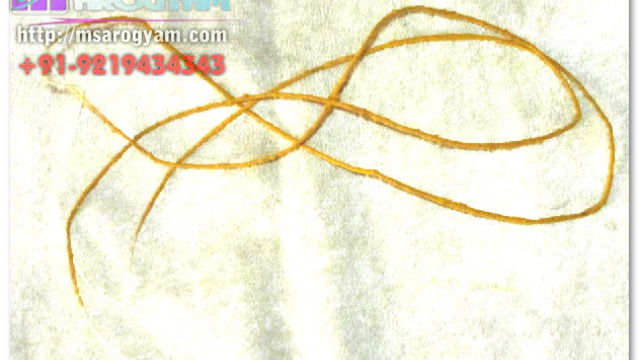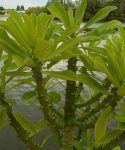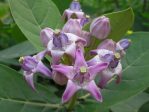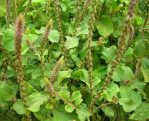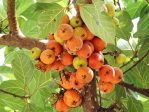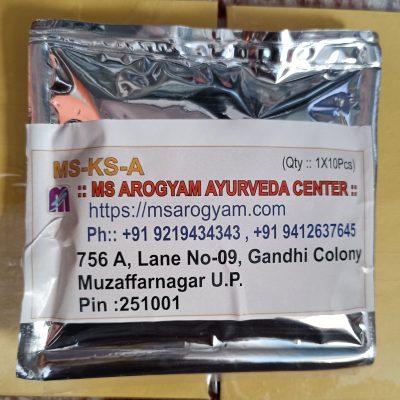Post Contents
- 1 How To Prepare Kshar Sutra : Detailed Explanation
- 1.1 Sanskrit verse
- 1.2 Theoretical reference
- 1.3 Materials needed
- 1.4 Collection of herbs
- 1.5 Storage
- 1.6 Apamarga kshara preparation
- 1.7 Haridra churna preparation
- 1.8 Medicating Coating the thread ::
- 1.9 Coating the thread
How To Prepare Kshar Sutra : Detailed Explanation
Preparation of Kshara Sutra is a lengthy and tedious process, while the result it produces in terms of terminating the ano-rectal disorders from their roots is unparalleled and commendable.
Sources Of Ksharas or alkalis extracted ::
- Apamarga (Achyranthes aspera),
- Arka (Calotropis gigantean),
- Kadali (plantain tree) etc are used to prepare the kshar sutr.
The ksheera (latex) of few plants are also used to prepare kshara sutra.
Optional use fro Latex :-
latex of snuhi (Euphorbia nerifolia), (papaya),udumbara (Ficus racemosa) etc.
Summary of the Contents Kshar Sutra
‘Ksharsutra’ can be defined as an Ayurvedic medicated thread coated with herbal alkaline drugs. ‘Ksharasutra therapy’ has been described as a treatment of choice for the treatment of fistula-in-ano due to low recurrence rate. However. Ksharsutra procedure is not yet globally accepted basically due to lack of standardization and poor acceptability by* modem surgeons due to lack of training and fear of complications. Standardization of ‘Ksharsutr is requires standardization in preparation process and quality standards melding its packaging, storage, labeling and developing scientific parameters for maintaining its uniform coating. pH. microbial check etc.
‘MsArogyam Kshar Sutra’ application is simple and time conserving. The tip of the ‘MsArogyam Kshar Sutra Carrier cum Application device’ is introduced in the external opening and allowed to follow the track up to the internal opening situated in the anal canal. Once the tip comes out through the internal opening, cap is removed and the Ksharsutra is held and then instrument is withdrawn from outside opening. By doing this, the embedded Ksharsutra is automatically placed in the fistula track whose two ends are tied together. ‘MsArogyam Kshar Sutra’ has truly made the entire procedure very smooth No probe is required m the procedure and Ksharsutra kept in the instrument remains sterile as well. Hence, this ‘Ksharsutra carrier cum application device’ will be helpful in Globalization of Ksharsutra technique for fistula ablation . Ksharsutra. Fistula in ano. Sushrut samhita. Bhagandar. Nadivrana chikitsa
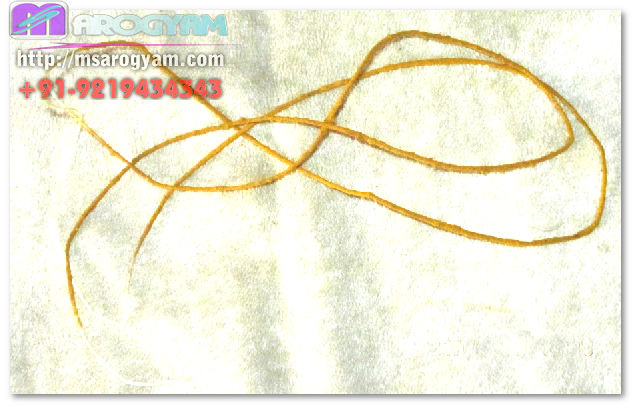
Sanskrit verse
bhavitam rajanl curnaihsnuhi kslraih punah punah|
bandhanat sadrdharp sutram cchinati arso bhagandaram]|
(cakradatta, arso adhikara, bhavaprakasa, bhaisajyaratnavali)
sudha dugdhe vastra puta haridra curnarn samyute|
nisiktena tu tulena svajpena khalu_yatnatah| |
praliptam sudnjham sutram cchayayam atha sosayet|
vilipya saptadha hi evarn sosayet bhisak vara^l I
sutram etat samakhyatam ksara sutram tu namatah|
gudankura cchedanartham amogham astram idam matam||
bhagandhara cchedanartham _api etad viniyujyate|
prayoktavyam ksara sutram savadhanataya sada| l(rasataramgini)
arka snuhi payohjiptam punah sutram visosayetl
tri varan sosayitva tu ksarena eva pralepayet| |(rasa kamadhenu)
Though there are many combinations preferred by various physicians (pertaining to the latex and alkali used) in preparing kshara sutra, I would explain the preparation of kshar sutra by taking one ksheera and one kshara which are regularly (commonly) used as examples.
Theoretical reference
Theoretical reference: of Ksharsutra
The thread which is impregnated or smeared repeatedly by Haridra or Haldi churna (turmeric powder) and snuhi ksheera (latex of Euphorbia neriifolia) when tied will cut and eliminate arsha (piles) and bhagandara (fistula) from their roots.
A thread should be smeared with a cloth should be dipped in sudha dugdha / snuhi ksheera (latex of Euphorbia neriifolia) mixed with haridraa churna (turmeric powder). Later the thread should be dried in shade. This procedure should be repeated 7 times. This thread will be called Kshara Sutra. This is highly beneficial in rooting out gudankura (piles) and bhagandara (fistula).
The thread smeared with snuhi ksheera (latex of Euphorbia neriifolia) or arka ksheera (latex of Calatropis gigantean) 3 times, should be dried in shade and after having applied with kshara (alkali) should be used in the treatment of arsha (haemorrhoids) and bhagandara (fistula-in-ano).
Materials needed
Materials needed to prepare ksharasutra:
Snuhi ksheera – Latex of Euphorbia nerifolia
Apamarga Kshara – Alkali extract of whole plant of Apamarga (Achyranthes aspera)
Haridra Churna – Powder of Turmeric
Aluminium or steel frames – are drilled with small hooks for holding threads in place at an interval of about 1.5 inches. The size of frame may vary to suit specific needs. The threads used in Kshara-sutra are hooked to this. The threads are tied end to end to the hooks at the ends of the frame. The threads smeared with (bhavana) ksheera and kshara are allowed in the drying chambers for drying before another coating of medicine is given to these threads.
Sutra (thread to prepare ksara sutra) – Thread, Surgical linen Barbour (brand size) No – 20 is used. Any cotton / linen thread of good strength can be used for Kshara Sutra preparation. Generally Barbour Linen sized No 30 and No 20 is preferred. No 30 thread is finer in comparison to No 20 thread. But No 20 is frequently used because the tensile strength of this thread is reduced to the least extent in comparison to other threads after the complete procedure. The thread is tightly wound around opposite hooks to form rows.
- Snuhi
- Akaha
- Apamarg
- Ficus
Collection of herbs
Collection of herbs needed to prepare Kshara Sutra
Collection of Snuhi Ksheera (latex of Euphorbia neriifolia) –
When to collect?
For best results, the snuhi ksheera should be collected early in the morning, before sunrise. If the latex is tried to extract after sunrise, we can get just a few drops of ksheera from Snuhi branch which might not be sufficient for preparing kshara sutra.
Collection method:
- Take a sharp scalpel or sterile knife.
- Slit the branch of snuhi vertically from below upwards.
- The cut shall be 5mm deep.
- Before cutting the branch, make sure you place a collection jar below the branch right under the slit.
- As soon as the cut is made, a milky substance (ksheera or latex) starts dripping down from the branch of snuhi.
- The ksheera is collected in the jar.
- The amount to be collected depends upon the number of threads that need to be coated.
Storage
- The snuhi ksheera is collected in a sterile jar.
- After collecting the ksheera, care should be taken to close and seal the jar to prevent the entry of air into it.
- If the ksheera is kept exposed to the air, the ksheera coagulates immediately on contact with air and turns into a gum like semi-solid substance.
- This becomes useless as it cannot be used to give bhavana or coat to the threads.
- Before coating the threads, the ksheera should be strained from a wire strainer or sieve or with the help of a double folded gauze piece.
- The ksheera is now ready for use.
- Snuhi ksheera should always be used fresh.
Apamarga kshara preparation
Method of preparing Apamarga Kshara (water soluble extract of Achyranthes aspera)
Apamarga full plant is burnt in open air. From its ash, kshara is prepared.
Haridra churna preparation
Preparation of Haridra Churna (Turmeric Powder)
The well developed and dried rhizomes of Haridra (Turmeric, Curcuma longa) are taken to prepare the powder. The rhizomes are pounded and filtered through sterile cloth or sieve so as to obtain their powder. This powder is stored in air tight containers. Alternatively, prepared powder of turmeric is available in the market.
Medicating Coating the thread ::
The thread used for kshara sutra is given several coatings (smearing) of the above said medicines. Over all 21 coatings are given. They are as follows:
Snuhi Ksheera bhavana / lepa –
The first 10 coatings to the thread are given with the fresh milk or latex of snuhi (Latex of Euphorbia nerifolia)
Snuhi Kshara and Apamarga Kshara –
The next 7 coatings are given with the combination of Snuhi Ksheera (Latex of Euphorbia nerifolia) and Apamarga Kshara (alkali of Achyranthes aspera)
Snuhi Ksheer and Haridra –
The final 4 coatings should be done with Snuhi Ksheera (Latex of Euphorbia nerifolia) and Haridra (turmeric powder)
Coating the thread
How is the thread coated?
First Step of Bhavana :–
10 bhavanas (coats) with snuhi ksheera (latex of Euphorbia nerifolia)
- The fresh Snuhi Ksheera (latex of Euphorbia nerifolia) is taken in a sterile bowl or crucible.
- A piece of gauze is taken and folded into a small square.
- The square gauze is dipped in the latex.
- The gauze dipped in the latex of snuhi is rubbed against the thread and the thread is coated (bhavana is given) with the snuhi kshara from below upwards.
- When all the threads are given bhavana in this manner, the fram is kept to dry in a specially made chamber.
- The first coat is allowed to dry.
- After the first coat is dried, the second bhavana or coating of snuhi ksheera is given.
- In this way, the thread is coated with the latex of snuhi for 10 times, one after the other.
- But it is made sure that a new coat (bhavana) is given only after every old coat gets dried, not before that.
- The frames of threads are placed in a special chamber for drying.
- The temperature inside the chamber may be increased by passing hot dry air with the help of a fan.
- The air inside the chamber should be kept circulating to facilitate quick drying of the threads.
- When the level of humidity within the chamber is less, the drying takes place quicker and in lesser time.
Second Step of bhavana :–
7 bhavanas (coats) with Snuhi Ksheera (latex of Euphorbia nerifolia) and Apamarga Kshara (alkali of Achyranthes aspera)
- After completing the first 10 coatings of Snuhi Ksheera, the threads are next given bhavana or coating with both Snuhi Ksheera (latex of Euphorbia nerifolia) and Apamarga Kshara (alkali of Achyranthes aspera).
- The thread which has been given 10 coats of snuhi ksheera and dried is coated with fresh snuhi ksheera in the same way described above.
- When the thread is still wet due to application of latex of snuhi, the powder of Apamarga Kshara is coated on it immediately so that the kshara sticks on the wet base of ksheera over the thread properly.
- This forms the double coat of ksheera and kshara in the 2nd round of application.
- Alternatively only 3-4 threads in the frame are coated with the ksheera and then the threads are made to pass through a pile of Apamarga Kshara on a flat plate, by sliding the frame over the pile of kshara in such a way that the threads pass through the pile of kshara and the kshara sticks on the wet threads properly.
- When all the threads of a frame are double coated in this way, the frame is again kept for drying in the chamber.
- The thread is coated in this way 7 times.
- The thread is coated only when the previous coat has been completely dried.
- With this 17 bhavanas would be finished (10 coatings with ksheera and 7 double coated with ksheera and kshara)
Third Step of bhavana :-
4 bhavanas (coats) with Snuhi Ksheera (latex of Euphorbia nerifolia) and Haridra Churna (Turmeric Powder)
- The last 4 bhavanas (coats) should be given with Snuhi Ksheera (latex of Euphorbia nerifolia) and Haridra Churna (Turmeric powder).
- The method of giving this double bhavana is same as the procedure explained in double coating of snuhi ksheera and apamarga kshara (in 2nd round of bhavana above). The only change is that the apamarga kshara application in 2nd round of bhavana is replaced by haridra churna application.
- The threads are smeared with snuhi ksheera. When the threads are still wet, they are given coat of haridra churna such that the haridra churna or turmeric powder sticks thoroughly to the threads on the wet base of snuhi ksheera.
- The threads given bhavana with snuhi ksheera and haridra churna should be kept in drying chamber and dried.
- On these dried threads again bhavana of snuhi ksheera and haridra churna is given.
- This procedure is done for 4 times.
- With the completion of 4 bhavanas with snuhi ksheera and haridra churna, we should have successfully given 21 bhavanas in total (10 with snuhi ksheera, 7 with snuhi ksheera and apamarga kshara and final 4 by snuhi ksheera and haridra churna).
- The kshara sutra is now ready for use.
Precautions to be taken while preparing Ksharasutra ::
- Every new bhavana (coat) of ksheera or ksheera and kshara (or churna) shall be applied only after the first coat has been thoroughly dried.
- While applying each coat, care should be taken that the medicament is applied thoroughly and that the medicine spreads evenly on all the sides of the thread and does not aggregate at one spot to make a clump or know of medicines.
- The thread should be smooth and even, having the same thickness throughout the length.
- Care should be taken to see that the whole procedure of preparing the kshara sutra is carried out in dry atmosphere.
- A specially prepared drying chamber shall be used for drying the threads so that it can be dried in a dust free atmosphere.
- In the absence of drying chamber, the threads may be dried in the open under direct sun rays in a dry and dust free atmosphere.
Preservation of Kshara Sutra ::
- As already mentioned, 21 coats or bhavanas of medicaments (ksheera, kshara and churna) are given to the threads.
- The threads are dried thoroughly.
- The dried threads are cut to uniform size and packed in capillary like sterile glass test tubes.
- These tubes are cut to size, cleaned, dried and sterilized.
- One or two threads are packed in each tube.
- The tube is packed or sealed over a burner so that the kshara sutra in it remains dry and sterile till they are put into use.
- These tubes are then sent for Gama Radiation after being packed and sealed.
- The tube is broken and the Kshara Sutra is removed for use when required.
Kshara sutra cabinet ::
Kshara Sutra Cabinet with ultraviolet light:
This is a specially designed instrument for the preparation of kshara sutra in an effective way.
Available designs – Horizontal cabinet and Vertical cabinet
The cabinet has 2 chambers, the bigger one for the kshara sutra hangers and the smaller one for the hot air blower, fan etc. A thermometer is also fixed which will indicate the temperature inside the cabinet.
Kshara sutra hangers – They are the rectangular shaped structures. They are made up of thick aluminium or wooden strips of about 2cm width and 3-4 mm in thickness. Each hanger has small cuts (notches) on both sides which are placed at a distance of 2-2.5 cm from each other. These notches are for hooking the thread throughout the width and length of the hangers. Each hanger has 15-20 notches on either side. The size of the hanger varies with the size of the cabinet. The width of the hanger is about 30 cm. One hanger can thus accommodate as many as 30-40 threads at a time and one kshara sutra cabinet accommodates roughly 30-50 hangers. Thus, the total capacity of the cabinet to manufacture kshara sutra in one round is 900-1600 threads.
The Kshara Sutra cabinet is used for preventing the contamination of medicated threads. This also prevents the dust particles from sticking to the wet threads. It also dries the coated thread rapidly and maintains sterilization through ultraviolet light. Cabinet acts as a bactericidal by providing constant temperature at 40 degree C, by providing dryness and constant heat which are antagonistic to growth of bacteria. It also prevents the hydrophilic activity of the coated medicated threads.
Other combinations
Other combinations in preparing kshara sutra:
Though I have explained the procedure of preparing the kshara sutra threads after having subjected them to 21 bhavanas (coats) using snuhi ksheera, apamarga kshara and haridra churna, the other medicines too can be skilfully combined to prepare the kshara sutra as per the preference of the physician, the morbidity in question and condition of availability of the herbs in the given geography where the doctor stays and the patient is being handled.
As already said, the kshara sutra can be prepared using the ksheera or latex from varieties of ksheeree vrikshas (latex yielding plants) and ksharas (alkalis) having medicinal properties and which can root-out the anorectal diseases from the depth.
Apart from snuhi ksheera, the latex of different trees like Udumbara (Ficus racemosa), Arka (Calotropis gigantean), Eranda Karkati (Papaya) etc shall be used.
Similarly apart from Apamarga Kshara, the alkalies or ksharas of Arka (Calotropis gigantean), Kadali (plantain tree), Nimba (neem tree) etc shall be used.
We supply Ksharasutra.
REFERENCES
1. Vagbhata’s ‘Astang Hridayam’ translated by Prof.K.R.Srikantha Murthy, Chaukhamba Krishnadas Academy, 2006, Varanasi, Vol.3 Chapter 28/25, p 269-270.
2. Illustrated Sushrut Samhita translated by Prof. K.R. Sri kantha Murthy, Chaukhamba Orientalia Second Edition 2005, Varanasi, Vol.2, Chapter 17/29-33,Page no. 168 and Chapter 8/3-52, p 95- 102.
3. Chakradatta, A treatise on Principles and Practices of Ayurvedic medicine by P.V.Sharma, Edition 2007, Kashi Ayurveda Series,Published by Chaukhambha Orientalia, Delhi, Chapter 46/1 p 376, Chapter 45/11-14 p 373and Chapter 5/148-151 p 87.
4. Shri Govinddas’s ‘Bhaishajya Ratnavalr – Vidyotini Tika by Kaviraj Shri Ambikadatta Shastri, Edited by Shri Rajeshwardatta Shastri, Chaukhambha Publication, Varanasi, 16th Edition, 2002, Chapter 50/18, p 605-606.
5. Shri Sadanand Shastri’s ‘Ras Tarangini’, Edited by Pandit Kashinath Shastri, 11th Edition 1979, Motilal Banarasidas Publication, Delhi, Chapter 14/ 59-66, p 337-338.
6. Govt, of India, Ministry of Health and Family welfare, Dept, of AYUSH, The Ayurvedic Pharmacopoeia of India, First Edition, 2007, Parti, Vol. 2, pi 01.
7. Baily and Love’s Short Practice of Surgery, Edited by R.C.G.Russell, N.Williamsand Chrostopher J. Bulstrode, 24th Edition 2004, Hodder Arnold publication, London, p 1265-1268.
8. Somen Das, A concise Text Book of Surgery, 4th Edition, Published by Dr.S.Das, Calcutta Feb. 2006.p. 1074-1076.
9. Sriram Bhat M., SRB’S Manual of Surgery, Third Edition, Published by Jaypee Brothers Medical Publishers, New Delhi, 2009, p 915-918.
10. Govt, of India, Ministry of Health and Family welfare, Dept, of AYUSH, The Ayurvedic Pharmacopoeia of India, First Edition, 2007, Parti, Vol. 2, p 101.

